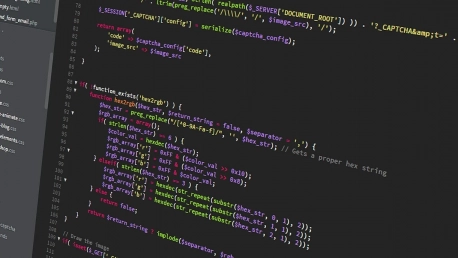In recent weeks, the cybersecurity community has been on high alert due to a critical vulnerability discovered in the Apache HugeGraph-Server. This severe flaw, identified as CVE-2024-27348, has a staggering CVSS score of 9.8, indicating its potential to cause widespread damage. Users of Apache HugeGraph-Server are urged to upgrade their systems to the latest version to prevent potential exploitation.
Nature of the Vulnerability
Gremlin API Exploit
The newly discovered vulnerability lies within the Gremlin graph traversal language API, a core component used in Apache HugeGraph-Server. This remote command execution flaw allows malicious actors to bypass sandbox restrictions, giving them the ability to execute arbitrary code on the affected servers. This makes the vulnerability particularly dangerous, as it can be exploited to gain unauthorized control over systems. The mechanics of the exploit involve manipulating Gremlin queries in such a way that they break out of their intended restricted environment, thus allowing full system access.In addition to its capability to let attackers execute arbitrary code, the flaw’s existence within the core Gremlin API suggests that many HugeGraph users could be at risk since the API is widely used for graph database functionalities. This deep integration amplifies potential damage, making immediate remediation essential. The vulnerability’s critical nature requires that IT administrators and developers alike understand not just the existence of the flaw, but its specific location and impact on system security. Understanding the granularity of this vulnerability can aid in both immediate patching and long-term security planning.
Risk of Remote Code Execution (RCE)
The primary threat posed by CVE-2024-27348 is remote code execution (RCE). Once the vulnerability is exploited, attackers can run malicious code remotely, potentially leading to severe disruptions. This type of vulnerability is especially dangerous because it can be exploited without physical access, making it a prime target for cybercriminals across the globe. The capability of executing code remotely means that an attack can be launched from anywhere, compromising data integrity, and service availability.RCE vulnerabilities like this are particularly dangerous because they allow attackers to not only disrupt services but also to pivot within networks, potentially reaching other sensitive areas of an organization’s infrastructure. Once inside, malicious actors can deploy ransomware, steal sensitive data, or create backdoors for future exploitation. The universal accessibility provided by internet connectivity means that no geographic region is safe, and time zones can no longer be relied upon as buffers against attack. Users of Apache HugeGraph-Server must act quickly to shore up defenses and prevent potentially catastrophic exploitation.
Recommended Mitigation Steps
Upgrade to Version 1.3.0
To mitigate this critical vulnerability, users must upgrade to Apache HugeGraph-Server version 1.3.0 as a matter of urgency. The new version contains essential patches that address the security flaw. Failing to update could leave systems exposed to potential attacks, underscoring the importance of immediate action. The upgrade process itself is straightforward but must be performed with due diligence to ensure all instances of the server are updated without fail. Overlooking even a single instance could result in significant vulnerabilities.The urgency of updating cannot be overstated. Cybercriminals are known to exploit gaps between vulnerability disclosure and patch application. Therefore, ensuring that the new version is implemented across all systems is a crucial step in safeguarding valuable data and maintaining service integrity. Additionally, version 1.3.0 has been designed to not only address this specific vulnerability but also to improve overall system security, making it a worthwhile upgrade even beyond the immediate threat posed by CVE-2024-27348.
Additional Security Measures
Beyond the upgrade, users are encouraged to adopt additional security measures to fortify their defenses. The latest patch requires Java 11 and suggests enabling the authentication system to enhance security. Additionally, activating the “Whitelist-IP/port” function is recommended to secure RESTful-API executions, providing an extra layer of protection against unauthorized access. These measures collectively make it significantly harder for attackers to exploit any vulnerabilities that may appear in the future, thus providing a more robust defense posture.Implementing whitelisting for IP addresses and ports can drastically reduce the potential vectors of attack by allowing only trusted entities to interact with the server. Additionally, enabling a robust authentication system ensures that only authorized users can perform sensitive operations, thereby reducing the likelihood of internal threats or rogue operators. These additional measures, when combined with the version upgrade, offer a holistic approach to securing Apache HugeGraph-Server environments, making concerted attacks far more difficult to execute.
Exploit Details and Observations
Technical Disclosures by SecureLayer7
The significance of CVE-2024-27348 was further underscored when SecureLayer7, a penetration testing company, released technical details and proof-of-concept (PoC) code in early June 2024. This disclosure demonstrated how the vulnerability could be exploited, revealing the ease with which attackers could bypass existing protections and take control of servers. The PoC not only validated the presence of the vulnerability but also provided a blueprint for potential attackers, thereby accelerating the urgency for users to update their systems.By providing a detailed technical breakdown, SecureLayer7’s disclosure has effectively served as a wake-up call for organizations relying on HugeGraph-Server. The information revealed demonstrates the necessity of quick intervention, as it highlights how straightforward it can be for malicious actors to utilize this vulnerability. This openness in the cybersecurity community is valuable for defensive purposes, but it also emphasizes the need for rapid response and ethical responsibility among users and administrators of affected systems.
Active Exploitation Attempts
Real-time monitoring by the Shadowserver Foundation revealed active attempts to exploit this vulnerability in the wild. These observations highlight the urgency for users to upgrade their systems promptly. The continuous efforts to exploit the vulnerability indicate that malicious actors are actively seeking to capitalize on unpatched systems. Shadowserver’s monitoring has identified targeted attacks aimed at unprotected servers, further proving that the threat is not merely theoretical but immediate and active.The findings by Shadowserver support the notion that cybercriminals waste no time in leveraging disclosed vulnerabilities. The pattern of active exploitation attempts underscores the necessity for proactive security measures, including real-time monitoring and logging, to detect anomalous activities that may indicate exploitation attempts. Businesses and organizations must treat these warnings seriously, ensuring that their security teams are not only patching vulnerabilities but also continuously monitoring for potential breaches during and after the patching process.
Broader Context and Implications
Targeting of Apache Software Projects
The vulnerabilities in Apache projects have long been attractive targets for both nation-state actors and cybercriminals driven by financial motives. This trend is evident in the recent history of significant exploitation of other Apache software such as Log4j, ActiveMQ, and RocketMQ. The persistent interest in Apache vulnerabilities stresses the critical need for diligent software management and timely updates. The historical context provided by these earlier exploits serves as a glaring reminder of the importance of proactive vulnerability management.Apache software’s widespread usage makes it an appealing target for a variety of threats, as exploits can be easily replicated across many systems and networks. The notoriety gained from successful attacks further incentivizes cybercriminals to focus their efforts on Apache projects. Maintaining up-to-date versions and continuously monitoring for vulnerabilities are non-negotiable practices for organizations that rely on these widely used open-source solutions. The ripple effects of neglecting such practices can lead to significant financial loss, reputational damage, and operational disruptions.
Importance of Proactive Security Practices
The recurring pattern of attacks on Apache software underscores the vital importance of proactive security measures. Regularly updating software, applying patches promptly, and implementing robust security configurations are essential practices in defending against emerging threats. Organizations must prioritize these actions to safeguard their systems from potential exploits. Proactive measures extend beyond patching to include regular security audits, vulnerability assessments, and employee training to recognize and combat potential threats.In today’s digital landscape, where threats evolve rapidly, and targeted attacks become increasingly sophisticated, organizations must adopt a comprehensive security strategy. This involves not only reactive measures to address known vulnerabilities but also predictive steps to anticipate and mitigate future risks. By fostering a culture of security awareness and responsibility, organizations can equip themselves to better handle the dynamic nature of cybersecurity threats. This approach minimizes risks and ensures a more resilient and secure technological infrastructure.
Conclusion
In recent weeks, a significant cybersecurity vulnerability in the Apache HugeGraph-Server has alarmed the community, prompting heightened security measures. This critical flaw, officially identified as CVE-2024-27348, carries an alarming CVSS score of 9.8. Such a high score underscores the severe potential for damage and exploitation, putting systems and data at serious risk. Cybersecurity experts are advising all users of the Apache HugeGraph-Server to promptly upgrade to the latest software version to protect against this critical threat. The vulnerability, if unaddressed, could lead to severe exploits affecting vast networks and essential data, emphasizing the urgency of taking immediate action. The cybersecurity community has been working around the clock to mitigate the risks associated with this vulnerability, offering support and resources to affected users. It is imperative that system administrators and users adhere to these recommendations to safeguard their infrastructure from potential malicious attacks.








